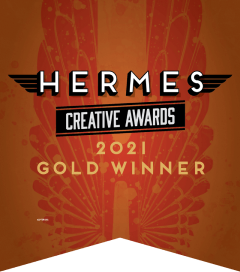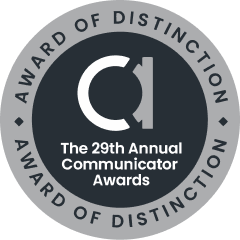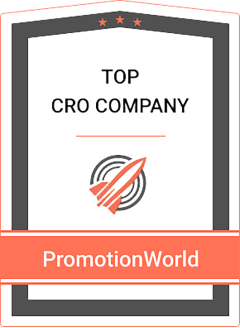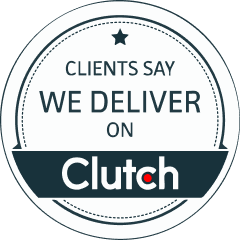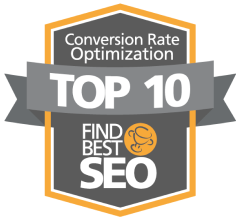Guest: Constantine Lau | Global Marketing Director | Schneider Electric
What things have we found value from the changes in the marketing program in 2020 will continue in 2021 when life goes back to normal? What kinds of creative thinking has this pandemic brought about? Hear Con discuss these great insights, as well as how to do less with more as we launch into the new year.
Transcripts
Laura Cuttill (00:06):
Good morning everyone. Joining us today is Constantine Lau, the global marketing director for Schneider Electric. He spent 20 years in marketing and management roles for the process industries, primarily in the downstream oil and gas. For the benefit of our audience, Schneider Electric is a worldwide manufacturing and service enterprise, serving customers in many manufacturing sectors. The company is a leader in digital transformation, integrating process and energy technologies to realize efficiency and sustainability opportunities for their customers.
Laura Cuttill (01:00):
Welcome Con.
Constantine Lau (01:02):
Good morning.
Laura Cuttill (01:02):
A good place to start, might be the general size and shape of your international market at Schneider Electric. Could you maybe share a little bit about Schneider and that market?
Constantine Lau (01:13):
Yeah, Schneider Electric is a French-based company, has been around for a long, long time. It’s a huge company with $27 billion revenue and 160,000 employees. Our market consists of multiple segments. The revenue is quite evenly distributed across worldwide; 25% North America, 25% European, 25% Belize, and 25% Asia Pacific. So it’s quite evenly distributed.
We specializes in the industrial automation and energy management. To pick an example for the oil and gas downstream industry. For example, like in the refinery and petrochemical plant. Anything related to the automation and also the power system and energy management system. I’d like to draw a parallel, but it’s like a human being, anything related to the brain, to the neuro-systems, controls and power, we do it, we provide a solution for that.
Laura Cuttill (02:09):
Great. I know this is a time of pretty drastic change for the process industries. As manufacturers are looking to maintain supply and demand balances with sustainability initiatives and regulatory compliance, price of oil is down, focus on sustainability is up. What are the biggest challenges for you in terms of changing the marketing strategy?
Constantine Lau (02:32):
Yeah, let me first define that marketing program is consisting of different multiple campaigns. So as a marketeer, you have different tools or different campaigns you can focus on. Obviously, the current most impactful thing is the pandemic, right?
Laura Cuttill (02:52):
Right.
Constantine Lau (02:52):
And also for the oil and gas industry is the sustainability initiatives. That has taken the whole industry by storm. But the pandemic, obviously the first thing is that the impact is the revenue and also the remoteness, the remote operations. So that changes the way we have to approach our clients, because no longer you can meet up with your clients frequently as you like. So you have to connect with them through digital means, right? Social media, either organic or paid.
Laura Cuttill (03:26):
That makes a lot of sense. So what do you see is key in that pivot to making that transition successfully?
Constantine Lau (03:33):
Well, first and foremost, two things. One is, content is the most important thing. When you try to communicate with your clients, you have to have substantial, meaningful content to deliver to your clients. And the clients we’re dealing with typically are technically pretty savvy because we talk about industrial automation and energy management systems. So you have to have meaningful content.
And then secondly, more important thing is how you deliver that content to your client, right? The different means of delivering to your clients either through a blog, a white paper, in a webinar, or even through your social media and also about account-based marketing, which I touch upon a little bit later on too.
Laura Cuttill (04:19):
Okay. All right, look forward to that. So you put a lot of effort into creating the pull effect in marketing, as opposed to the push. What do you think the biggest contributors are to creating that pull?
Constantine Lau (04:31):
Yeah. Let me define a pull and push.
Laura Cuttill (04:33):
Sure.
Constantine Lau (04:34):
In marketing terms, push means a lot of related to selling, because your company’s CEO wants to see the effect of your marketing. A lot of times associated with the selling part. How much that marketing campaign has contributed to the selling of your product. So there’s a lot of push. The push is usually the sales part. How we push the message to our client, or you create a discount strategy to your client or how you push the message to your client.
The pull effect is how you generate, lay the content, the information out in the marketplace and to draw your client to your sales guy, in direct selling. Or in direct selling, the channel, your content laid out in the public, how they draw you to your channel partners. That’s what I mean by push or pull.
And with the pandemic, it’s hard to push a message around because you don’t see your clients as often as you’d like. So you need to put meaningful content out there and draw your clients to it. So when your client meet up with your sales or your channel partners, they already know your message, they have already formulate a brand image of your company, and that will improve your chances of closing the sales.
Laura Cuttill (05:48):
That makes a lot of sense. So, you touched a little bit on how the pandemic has changed efforts in 2020. As we come out of it in 2021, how do you think that it will go back? Do you think these things are here to stay, or do you think that we’ll revert back to many of the brass tax things that we did before?
Constantine Lau (06:09):
Yeah. I mean, obviously the elephant in the room is that when things goes bad, usually the company will cut the marketing dollars. So you have to find meaningful way of delivering your message. So coming out of this pandemic, I think eventually everything would go back to normal. But with the limited resources, either people or money you have in your marketing dollars, you have to be a little bit smarter on how you spend the money.
There are different ways of spending the money. So I was talking about account-based marketing. Schneider Electric is pretty big on account-based marketing because we have 20% of revenue is driven. For example, in oil and gas segment, 80% of revenue driven by 20% of our accounts. And those are the big accounts. So when we say account-based marketing, we target a specific number of customers within a strategic accounts, like a big oil and gas company, and then we’ll disseminate message to those guys. For example, a customized newsletter that we distribute to our clients, every quarterly. We’re very specific content catered to that particular account.
So the account manager had to do some work and figuring out what the client’s needs and challenges are. And then we’ll customize the content and deliver it to those clients. And it has been proven to be pretty effective. For example, an account that we targeted, initially we have about 150, 200 names on the list. Eventually, two years later, we have about 600 to 800 names on the list now. So we have specific targeted account names that we target to disseminate a message, either white paper, blogs, or newsletters, and those doesn’t cost money.
Laura Cuttill (07:49):
Yeah. My comment to that was going to be that implies a very hand-in-hand working relationship between marketing and sales, and typically you don’t see that just a whole lot.
Constantine Lau (08:01):
Yes.
Laura Cuttill (08:02):
What do you think has been the secret to getting there? Did you just put them all in a room and say, figure it out?
Constantine Lau (08:08):
No, I mean, obviously, when push comes to shove, when the company tells you, hey, we don’t have the same amount of marketing dollars that you have last year to use. Then you have to be creative of what you’re trying to create your marketing campaign. For example, conferences are typically a very effective marketing tool because you can draw your customer to a gathering and you can exchange ideas and create excitement about your brand. But with the pandemic, you don’t have that luxury anymore. You cannot have a conference.
So you create online conferences to replace that. Schneider Electric are pretty creative in that way. We have called the virtual conferences. Almost, you go into the conference, you go into the screen, and you walk into a conference and you can walk around the lobby and look at the topics you’re interested, and you click on that particular kiosk and you bring into your specific topic. And a person with video will talk to you. It’s almost like a virtual AI-driven conferences. It’s pretty creative. So that is to replace the actual in-person conferences with a virtual conference.
Laura Cuttill (09:17):
Yeah, I bet that good level of creativity staves off the virtual event fatigue when you’ve got something really engaging like that.
Constantine Lau (09:25):
Yeah, initially, when the pandemic started, we try a lot of webinars. And six months later, we figured out everybody got the webinar fatigue. We decided to try different avenue. The content, obviously, come back to the content again, is very important because we start submitting a lot of paper to conferences. And then if you have good content, your paper will get selected and that’s a free social media for you. And usually, the audience for those are quite technical too. So that pays off for us.
Laura Cuttill (10:00):
Well, very good. Well, are there any other sort of main points or tips you’d like to leave our listeners with?
Constantine Lau (10:09):
Like I said, you just have to be creative. Marketing program consists of different campaigns, different things you can try, like account-based marketing, and sometimes you can do voice of customers. Discuss discovery process with your clients, is a way of selling, but not being self-serving, but also try to find out what your customer pinpoints are. In oil and gas segment, the hot topics today are, obviously, the pandemic, sustainability, digitalization, and cybersecurity. Those are interesting topics. And you can use that as a pivot to create your content to draw your customers in.
Laura Cuttill (10:43):
Absolutely. Absolutely. Well Con, thank you so much for your time today. We really appreciate it. And everybody out there, you’re welcome to find us on social media @CMOGTE. Con, hope to see you again.
Constantine Lau (10:58):
Thank you.
Laura Cuttill (10:58):
Thanks.
Constantine Lau (10:58):
Bye.








